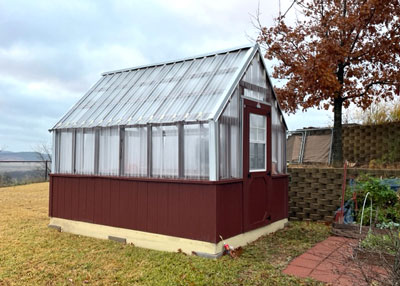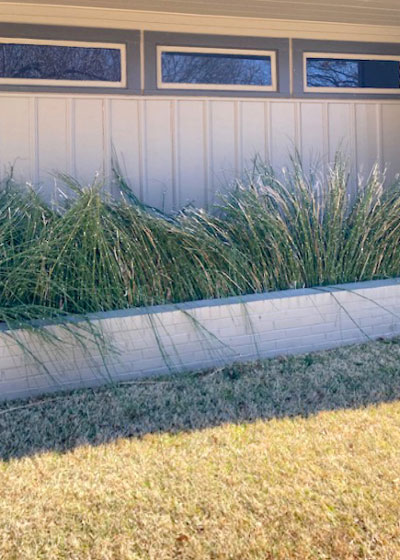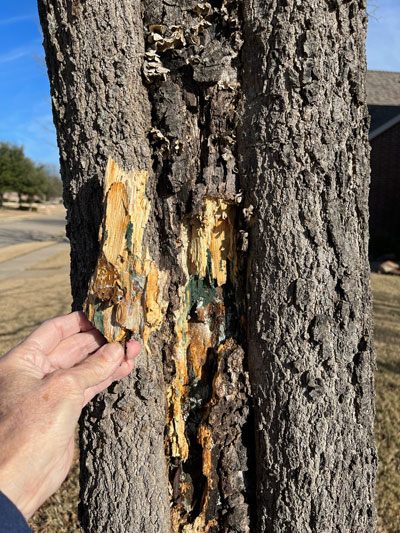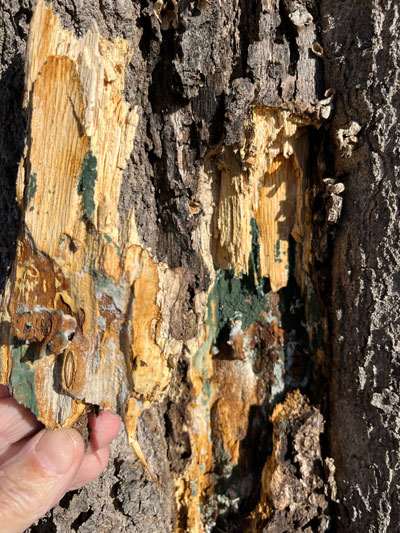Q&A – Ask Neil: January 25, 2024
(Please read these instructions carefully.)
Before you post your question, please look at recent issues to see if someone else has already asked it. You might find your answer there.
How to submit your question…
(Note: You may need to allow a pop-up window to come up in order to get the link for sending your photo(s). If you have already submitted your question and didn’t see the pop-up window, please click here.)
• Click the link provided below to post your question. After you submit your question, a new window will pop up giving you the address to which you can e-mail a SHARP, HIGH-RESOLUTION PHOTO to accompany your question. Please DO NOT SEND THUMBNAIL PHOTOS in case I need to zoom in to see things.
• Click here to post your question.
• Please ONLY POST YOUR QUESTION ONE TIME. We can only accept a set number of questions each week, and when we get duplicates it costs other people their chances.
• One question per reader, please.
• Please use this only for posting questions – not for standard emails.
• Watch for your answer in the following week’s e-gardens.
• I choose those of greatest general interest. For example, plant IDs seldom make the cut.
• I must have your first name or initials.
• I must have your city or county. (Texas is a very large state.)
QUESTION 1
IS THERE A WAY TO KEEP SQUIRRELS AWAY FROM BIRD FEEDERS?
Question: Is there a way to keep squirrels away from bird feeders? Is there a truly squirrel-proof bird feeder design? Don S., Dallas.
Answer: The folks at Wild Birds Unlimited have some very clever deterrents for squirrels. You can do a little advance window-shopping on their website wbu.com, and there are several stores in the Metroplex, where you could stop in and visit with experts. Obviously, I would love to see you go into our e-gardens advertisers at the McKinney Wild Birds store at 3001 South Hardin Blvd. However, David or Ron at the Dallas stores are veteran bird enthusiasts, too. They could help you as well. I’ve had very good luck using the Wild Birds products. I have also hung my feeders from springs off brackets from my tree trunks. You just have to outthink the squirrels.
QUESTION 2
HOW CAN WE KEEP OUR NEW GREENHOUSE FROM OVERHEATING?
Question: We have a new 8×12-ft. greenhouse. We have the night temperatures down just right, but we’re struggling with daytime temperatures in spite of having vents and fans. Do you have any suggestions? Susan C., Bryson (Jack County).

Answer: Cooling smaller greenhouses in sunny locations in Texas is always a big challenge. My first greenhouse was a 6×8-ft. greenhouse. Even on nights when it got as cold as 15 or 20F, by 9 the next morning it could be 95 in the greenhouse if I left the vents shut. And it was too cold to open them as I drove off to work. It was a real game trying to balance the temperature. I finally found that I had to concentrate on plants that could handle the great differences in temperature, and that meant primarily succulents and cacti. That was fine with me because those are my favorites anyway.
My next greenhouse was a 10×20-ft. unit. I positioned it up beneath shade trees. That made all the difference.
For the past 38 years I’ve had a 30×60-ft. greenhouse and that has helped a great deal. The larger volume of air heats more slowly so I have an easier time of getting it to cool it down.
However, by mid-spring even the larger greenhouse can be a real toaster oven. My solution to that was to put 62 percent nursery shade fabric over the greenhouse and leave it in place all year long. That has allowed me to grow tropical foliage plants very successfully. I move my cacti to the outer edges of the greenhouse where they receive more sunlight.
Your greenhouse is absolutely beautiful. There might be a way to put a handsome lath cover over the top of it 6 or 7 inches above the current roof. You can space the slats as you wish to get the percentage of shade that you want, but they should run north/south for uniform shading as the sun passes overhead. It could be done almost like you would do a patio cover. Done by a skilled carpenter it would be very attractive. That would allow air to move between the shade and the top of the greenhouse, and I believe that would work very well. It also would give you protection from the hailstorms that we all face the northern half of the state.
As far as equipment is concerned, a skilled HVAC expert could give you much better advice than I can. There have been some significant advances in that industry. I would talk to somebody either in Jacksboro or even Fort Worth to see what is available.
As for information to help you, I haven’t looked at books for a while. They tend to be written for northern climates, so they usually miss the heat problem that we face here in the South. The manufacturer probably has suggestions, and there will be information online. I’ve hit a bunch of deadlines this week. I’ll set some time aside and see what I can find.
QUESTION 3
WHERE DO SPIDER MITES COME FROM AND CAN I PREVENT THEM?
Question: I’ve had no luck controlling spider mites. Where do they come from? Do they overwinter in the soil? Can I prevent them? Steve V., Ellis County.
Answer: I don’t think you’ll find any way of preventing spider mites. I certainly never have. I would describe them as omnipresent in Texas. They also would rank as the most destructive pest of garden and landscape plants in our state, also the smallest. What you must do is learn to recognize the very earliest signs of their invasion, and then step to stop them immediately. That may require the use of an insecticide labeled for spider mites, but it could also involve spraying the plants with a strong stream of water, hitting the bottoms of the leaves at the same time as the tops.
Our problem has been that our miticide Kelthane was taken off the market 15 or so years ago and we don’t have a control that is specifically for mites. General-purpose insecticides do an adequate job of reducing the mite populations. That’s why it’s so important that you go after them immediately when you see the damage beginning. It also helps to plant crops that are less susceptible and to space the plants so that they are not massed together. Crowding makes it easier for them to spread.
QUESTION 4
CAN YOU GIVE MORE DETAIL ON FROST CLOTH?
Question: Not all frost cloth looks like yours. Many are thicker and look woven. Could you give more details on exactly what you use? Tomina E., Dallas.
Answer: There are many brands of frost cloth on the market. I’ve always made it my practice not to get brand-specific in my answers to gardeners’ questions. In fact, in this case, I couldn’t if I wanted to. I’ve had mine for several years and the box in which it came is long gone. As long as you get something manufactured for the purpose of protecting plants from frost and freeze damage, you should be fine. The one exception I would make is with those that have dark colors such as green. They may look better in the landscape, but they will absorb too much sunlight early in the morning and overheat quickly. That is not good for the plants and can result in more damage than the cold itself would. For the record, the one you saw in my photos recently is actually one of the heaviest types that I’ve ever used. The woven, lightweight types work just as well.
QUESTION 5
WILL MY HORSETAIL REED COME BACK?
Question: The cold and wind did a number on my horsetail reed. Should I cut them back to the ground? Will they come back? Can I protect them in the future? Francis B., Fort Worth.

Answer: Your plants should survive quite well, but it’s pretty obvious that the tops have been hurt badly by the cold. I would wait another week or two and then trim off anything that is limp or badly discolored. That may mean that you end up cutting the bed back to within an inch or two of the soil. You should have aggressive new growth quickly this spring. The frost cloth that I have shown and talked about here over the last couple of months would have stopped all this damage.
QUESTION 6
WHAT IS LIKELY TO HAPPEN TO MY OAK TREE?
Question: A 15- to 20-year-old oak tree has had this trunk damage since the 2022 freeze. What is its prognosis? Mike S., Murphy, Collin County.



Answer: I don’t believe this damage is due to the freeze of a few years ago. You mentioned 2022, but the cold that did so much damage to other oaks across Texas was February 2021. However, this does not look at all like that damage that caused “radial shake” where the bark popped loose. This looks more like sunscald and its subsequent decay, or decay brought on by a small branch that was not properly pruned, perhaps with a stub left in place. It looks like it might not have healed correctly. Hopefully the tree can heal across the very deep wound and recover. I can’t tell how much vigor it has from the photos since there are no leaves in place. I would just leave it on its own and see how it does. Good luck with it!
QUESTION 7
WHEN IS THE BEST TIME TO APPLY WEED-AND-FEED?
Question: When is the best time to apply a weed-and-feed product to my St. Augustine? Kathy S., Longview.
Answer: I am not an advocate of weed-and-feed products. One of my reasons has to do with timing. Pre-emergent weed controls for spring need to be applied a couple of weeks prior to the average date of the last killing freeze in the spring. That would be perhaps one month too early to be fertilizing the grass. If you were to wait the month until it was proper time to fertilize, you’d be too late for the pre-emergent. Granted, some of the weed-and-feed products contain broadleafed herbicides to kill existing weeds, but that puts trees at risk since they share the same soil. So, I hit roadblocks any direction I turn.
My other concern has to do specifically with Atrazine. It’s in some products intended for use on St. Augustine. I’ve seen hundreds of landscape trees, even huge mature ones, damaged or killed by Atrazine. I just don’t feel it should be used anywhere trees might share soil with turf roots.
In my opinion we should use another weedkiller at the appropriate time and fertilizer at its prime time – two separate practices. It’s not much extra work, and your trees will be grateful.
